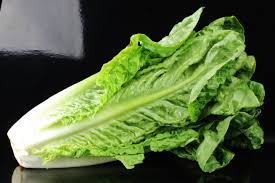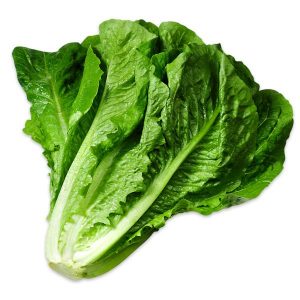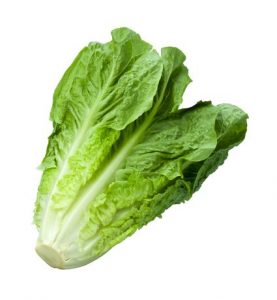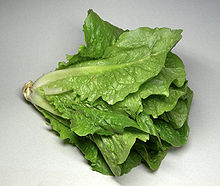From a barfblog.com reader:
 True story….McDonald’s employee said ” we don’t have any salads because of the Romanian lettuce.”
True story….McDonald’s employee said ” we don’t have any salads because of the Romanian lettuce.”

From a barfblog.com reader:
 True story….McDonald’s employee said ” we don’t have any salads because of the Romanian lettuce.”
True story….McDonald’s employee said ” we don’t have any salads because of the Romanian lettuce.”
David Meyer of Fortune magazine reports the U.S.’s mysterious E. coli outbreak now has a likely culprit: romaine lettuce grown around Yuma, Arizona. And consumers are being given conflicting advice on what to do to protect themselves.
 The Food and Drug Administration (FDA) and Centers for Disease Control and Prevention (CDC) said Wednesday that any consumers in the U.S. who have store-bought chopped romaine lettuce should throw it away. If they want to buy romaine lettuce from now on, they should first check with the store or restaurant that it wasn’t grown in the Yuma region, the agencies said.
The Food and Drug Administration (FDA) and Centers for Disease Control and Prevention (CDC) said Wednesday that any consumers in the U.S. who have store-bought chopped romaine lettuce should throw it away. If they want to buy romaine lettuce from now on, they should first check with the store or restaurant that it wasn’t grown in the Yuma region, the agencies said.
However, Consumer Reports has gone a step further, advising people to avoid all romaine lettuce for the time being. Why? Because people may find it difficult to establish for sure that their lettuce does not come from the growing region that’s suspected to be the source.
Niraj Chokshi of the New York Times reported that CDC said in a statement, “If you do not know if the lettuce is romaine, do not eat it and throw it away,” the C.D.C..
The agency was first alerted to the outbreak by health officials in New Jersey, who had noticed an increase in E. coli cases in the state, said Dr. Laura Gieraltowski, an epidemiologist at the C.D.C. After some discussion, it became clear that many of those infected had eaten chopped romaine lettuce at restaurants before getting sick.
Concerned, the agency looked for related cases by checking PulseNet, a national network of laboratories that catalog samples of harmful bacteria from infected patients.
“When we looked back into our PulseNet system we saw that there were other cases in other states with the same DNA fingerprint,” Dr. Gieraltowski said.
The C.D.C. learned that the others infected by that particular strain, E. coli O157:H7, had also eaten chopped romaine lettuce at restaurants before getting sick, she said. It turned over the information to the Food and Drug Administration, which helped trace the outbreak to Yuma, Ariz.
 To pinpoint the exact source, though, investigators would need samples of the tainted lettuce. But because of the short shelf life of lettuce and the time it takes for an outbreak to be identified, obtaining such a sample may prove difficult.
To pinpoint the exact source, though, investigators would need samples of the tainted lettuce. But because of the short shelf life of lettuce and the time it takes for an outbreak to be identified, obtaining such a sample may prove difficult.
However, a cluster of eight illnesses in an Alaska prison may help pinpoint the source.
Dr. Joe McLaughlin, with the Epidemiology Section at the state Department of Health and Social Services, said health officials had responded last week to an outbreak of E. coli O157:H7 bacteria at the Anvil Mountain Correctional Center in Nome, Alaska.
None of the eight patients have died or been hospitalized, in cases which were noticed between April 5 and April 15. All ate “significantly higher” numbers of salads than other people at Anvil Mountain, however, and have shown the same symptoms.
“Our outbreak is the first one I know of that’s been associated nationally with the consumption of whole heads of lettuce rather than chopped lettuce,” McLaughlin said. “What this outbreak suggests is that the source of contamination may actually be at the farm rather than the actual processing of the lettuce.”
Duh.
CDC reports in its latest outbreak update that information collected to date indicates that chopped romaine lettuce from the Yuma, Arizona growing region could be contaminated with E. coli O157:H7 and could make people sick.
At this time, no common grower, supplier, distributor, or brand has been identified.
Consumers anywhere in the United States who have store-bought chopped romaine lettuce at home, including salads and salad mixes containing chopped romaine lettuce, should not eat it and should throw it away, even if some of it was eaten and no one has gotten sick. If you do not know if the lettuce is romaine, do not eat it and throw it away.
Before purchasing romaine lettuce at a grocery store or eating it at a restaurant, confirm with the store or restaurant that it is not chopped romaine lettuce from the Yuma, Arizona growing region. If you cannot confirm the source of the romaine lettuce, do not buy it or eat it.
Restaurants and retailers should ask their suppliers about the source of their chopped romaine lettuce.
It’s time to end the leafy greens cone of silence.
This time it has made people unnecessarily sick.
I wouldn’t touch their product.
But how would I know?
On Sept. 14, 2006, the U.S. Food and Drug Administration announced that an outbreak of E. coli O157: H7 had killed a 77-year-old woman and sickened 49 others. The FDA learned from the Centers for Disease Control and Wisconsin health officials that the outbreak may have been linked to the consumption of produce and identified bagged fresh spinach as a possible cause.
Eventually, four would die and at least 200 sickened.
One of the responses was to form the Leafy Greens Marketing Agreement (LGMA) which apparently overseas most of the leafy greens production in the U.S.
They are known primarily for self-aggrandizing press releases.
And lots of rumors about how they inhibit epidemiological investigations into outbreaks of foodborne illness linked to their products (search ‘cone of silence’ on barfblog.com for plenty of examples)
According to the U.S. Centers for Disease Control, since the last update on April 10, 2018, 18 more people from 9 states were added to this outbreak.
How many of those could have been prevented if CDC or State health types fingered chopped Romaine lettuce when rumors started circulating? Is the goal of LGMA really to forego epi and demand absolute proof before going public?
As of April 12, 2018, 35 people infected with the outbreak strain of E. coli O157:H7 have been reported from 11 states. Illnesses started on dates ranging from March 22, 2018 to March 31, 2018. Ill people range in age from 12 to 84 years, with a median age of 29. Sixty-nine percent of ill people are female. Twenty-two ill people have been hospitalized, including three people who developed hemolytic uremic syndrome, a type of kidney failure. No deaths have been reported.
 Illnesses that occurred after March 27, 2018, might not yet be reported due to the time it takes between when a person becomes ill with E. coli and when the illness is reported. This takes an average of two to three weeks.
Illnesses that occurred after March 27, 2018, might not yet be reported due to the time it takes between when a person becomes ill with E. coli and when the illness is reported. This takes an average of two to three weeks.
Epidemiologic evidence collected to date indicates that chopped romaine lettuce is the likely source of this outbreak. Twenty-six (93%) of 28 people interviewed reported consuming romaine lettuce in the week before their illness started. This percentage is significantly higher than results from a survey[787 KB] of healthy people in which 46% reported eating romaine lettuce in the week before they were interviewed. Most people reported eating a salad at a restaurant, and romaine lettuce was the only common ingredient identified among the salads eaten. The restaurants reported using bagged, chopped romaine lettuce to make salads. At this time, ill people are not reporting whole heads or hearts of romaine.
 Traceback investigations are ongoing to determine the source of chopped romaine lettuce supplied to restaurant locations where ill people ate. At this time, no common grower, supplier, distributor, or brand has been identified. However, preliminary information indicates that the chopped romaine lettuce was from the Yuma, Arizona growing region.
Traceback investigations are ongoing to determine the source of chopped romaine lettuce supplied to restaurant locations where ill people ate. At this time, no common grower, supplier, distributor, or brand has been identified. However, preliminary information indicates that the chopped romaine lettuce was from the Yuma, Arizona growing region.
Information collected to date indicates that chopped romaine lettuce from the Yuma, Arizona growing region could be contaminated with E. coli O157:H7 and could make people sick.
Advice to Restaurants and Retailers:
That’s right, consumers, it’s up to you.
It should be up to the restaurant or retailer, who markets food safety at point-of-purchase.
And LGMA, which covers Yuma growing, should be forthcoming about risks, rather than blowing themselves in nonsensical tweets.
Over the past seven weeks, 58 people in the U.S. and Canada have become ill and two have died from E. coli O157H7, linked by Canadians to romaine lettuce, probably grown in California, given the timing of illnesses.
 On Dec. 11, 2017, the Public Health Agency of Canada did its public duty and notified Canadians that at least 21 people were sick with E. coli O157:H7 and the probable source was romaine lettuce.
On Dec. 11, 2017, the Public Health Agency of Canada did its public duty and notified Canadians that at least 21 people were sick with E. coli O157:H7 and the probable source was romaine lettuce.
A couple of retailers in Canada pulled all romaine lettuce from the shelves, but the others shrugged and said, not enough is known.
By Dec. 28, 2017, the Canadian numbers had jumped to 41 sick and one dead, and the U.S. Centers for Disease Control chimed in to say there were 17 sick in the U.S. with a similar strain but they wouldn’t say it was linked to romaine lettuce, with the Trumpesque language of “CDC is unable to recommend whether U.S. residents should avoid a particular food.”
Outbreaks are hard, but where’s the tipping point between protecting public health and protecting a commodity and all the growers, retailers, involved?
Everyone went off and enjoyed New Year’s, and then people woke up again on Jan. 2, 2018 (happy new year), to be told by the Toronto Star (that’s in Canada) that of the 17 U.S. cases, five people have been hospitalized, one of whom has died. Two have developed hemolytic uremic syndrome.
On Jan. 3, 2018, Trisha Calvo of Consumer Reports wrote the group’s food safety types advise “consumers stop eating romaine lettuce until the cause of the outbreak is identified and the offending product is removed from store shelves.”
“Even though we can’t say with 100 percent certainty that romaine lettuce is the cause of the E. coli outbreak in the U.S., a greater degree of caution is appropriate given that lettuce is almost always consumed raw,” says James Rogers, Ph.D., director of food safety and research at Consumer Reports.
“There is not enough epidemiologic evidence at this time to indicate a specific source of the illnesses in the United States,” says Brittany Behm, MPH, a CDC spokesperson. “Although some sick people reported eating romaine lettuce, preliminary data available at this time shows they were not more likely than healthy people to have eaten romaine, based on a CDC food consumption survey.” Health officials, Behm says, take action when there is clear and convincing information linking illness to a contaminated food.
“The FDA should follow the lead of the Canadian government and immediately warn the public about this risk,“ said Jean Halloran, Director of Food Policy Initiatives at Consumers Union, the policy and mobilization division of Consumer Reports.
“The available data strongly suggest that romaine lettuce is the source of the U.S. outbreak,” she says. “If so, and people aren’t warned, more may get sick.”
That got attention, and many media outlets chimed in.
barfblog.com’s Ben Chapman told Rachael Rettner of Live Science that, “[To] say ‘avoid romaine for now,’ I don’t know if I have enough information to agree with that statement,” Benjamin Chapman, an associate professor and food safety specialist at North Carolina State University.
“Avoiding just romaine may or may not be enough,” because other lettuces or foods could also be affected, Chapman told Live Science. “It could be that there’s a different [food] source of this exact same pathogen,” he said.
Another possibility is that the E. coli strain causing illness in the United States is actually slightly different from the strain in Canada. “We could be looking at two different outbreaks at the same time,” Chapman said.
About four times a day I’ll get a tweet from the Leafy Green Marketing Agreement – the folks who set themselves up after the spinach outbreak of E. coli O157:H7 in 2006 that killed four and sickened 200 – blowing themselves about how great they are, and how their products are so safe.
 If you want that kind of PR, then you have to take the hits as well.
If you want that kind of PR, then you have to take the hits as well.
LGMA never talks about an outbreak linked to leafy greens (publicly).
To me, they’ve succeeded best at lowering the leafy greens cone of silence and intimidating public health types into delaying reports of outbreaks.
But late on Jan. 4, 2018, LGMA finally made a public statement, below, with my comments.
A group of produce industry associations today issued the following statement to update consumers on a recent e.coli outbreak being investigated in Canada in the U.S.:
It’s E coli. You folks should be well-versed in that.
The U.S. Centers for Disease Control and Prevention has not identified what food likely caused this foodborne illness. No public agency has contacted any Romaine lettuce grower, shipper or processor and requested that they either stop shipping or recall product already in the marketplace.
Defensive.
Even if this outbreak is actually confirmed to be caused by Romaine lettuce, it’s important to recognize this is a highly perishable product with a limited usable shelf life and it’s highly unlikely a specific affected lot would still be available for sale or in a home refrigerator with the last U.S. illness being reported on December 8th.
Carry on, it’s all gone.
Food safety remains a top priority of leafy greens farmers, shippers and processors and the industry has robust food safety programs in place that incorporate stringent government regulatory oversight.
The Pinto defense. Audits and inspections are never enough, and saying we have government oversight does nothing to build trust with the consuming public, as research shows.
Our leading produce industry associations have and will continue to cooperate fully with public health officials investigating this foodborne illness outbreak.
Anytime we see an outbreak of any foodborne illness, our hearts go out to the victims.
This is what you should have led with. Now it reads like a tack-on.
If the leafy green marketing folks want to be truly transparent, they will make actual inspection data public for mere mortals to review, they will market microbial food safety at retail, and stop stonewalling every time there is an outbreak linked to leafy greens.
I have lots of respect for individual farmers who make a go of it and produce the bounty of produce we enjoy.
I have no respect for self-serving associations with bad soundbites.
A table of leafy green related outbreaks is available at https://www.barfblog.com/wp-content/uploads/2018/01/lettuce-leafy-greens-outbreaks-table-_1-5-18.xlsx
Eastern Canada has been experiencing an outbreak of E. coli O157:H7 infections linked to romaine lettuce. Since the lettuce is eaten raw, this increases the likelihood of acquiring the infection. It appears now that the states are experiencing a similar outbreak. The CDC is performing whole genome sequencing to determine if this outbreak is related to the Canadian romaine lettuce outbreak.
CDC, several states, and the U.S. Food and Drug Administration are
investigating a multistate outbreak of Shiga toxin-producing E. coli O157:H7 infections (STEC O157:H7) in 13 states. Seventeen illnesses have been reported from California (3), Connecticut (2), Illinois (1), Indiana (1), Michigan (1), Nebraska (1), New Hampshire (2), New York (1), Ohio (1), Pennsylvania (1), Virginia (1), Vermont (1) and Washington (1). Illnesses started on dates from November 15 through December 8, 2017. The Public Health Agency of Canada also is investigating an outbreak of STEC O157:H7 infections in several provinces.
CDC is performing whole genome sequencing on samples of bacteria making people sick in the United States to give us information about whether these illnesses are related to the illnesses in Canada. Preliminary results show that the type of E. coli making people sick in both countries is closely related genetically, meaning the ill people are more likely to share a common source of infection.
The Public Health Agency of Canada has identified romaine lettuce as the source of the outbreak in Canada. In the United States, state and local public health officials are interviewing sick people to determine what they ate in the week before their illness started. CDC is still collecting information to determine whether there is a food item in common among sick people, including leafy greens and romaine.
Because we have not identified a source of the infections, CDC is unable to recommend whether U.S. residents should avoid a particular food. This investigation is ongoing, and more information will be released as it becomes available.
Every day I eat food that doesn’t kill me. Or hasn’t yet.
I get kinda emotional when I read about a death linked to food.
While billions of servings of food every year don’t lead to tragedy, when it does I take notice.
I’ve met folks who continue to suffer the life-long impacts of foodborne pathogens; people who have watched their loved ones in pain in a hospital bed and ultimately them.
All from food.
According to an updated statement from the Public Health Agency of Canada, 30 people across Canada are dealing with E. coli O157 linked to romaine lettuce. There’s not a lot of details though.
Currently, there are 30 cases of E. coli O157 illness under investigation in five provinces: Ontario, (6), Quebec (5), New Brunswick (5), Nova Scotia (1), and Newfoundland and Labrador (13). Individuals became sick in November and December 2017. Twelve individuals have been hospitalized. One individual has died. Individuals who became ill are between the ages of 4 and 80 years of age. The majority of cases (70%) are female.
Many individuals who became sick reported eating romaine lettuce before their illnesses occurred. The Canadian Food Inspection Agency is working with public health officials to determine the source of the romaine lettuce that ill individuals were exposed to.
No one should die as a result of food they ate.
The Sponge-Bob leafy greens cone of silence has once again been deployed with 21 sick from E. coli O157 linked to Romaine lettuce.
 The Public Health Agency of Canada made the announcement Monday night, so it’s time for another edition of spokesthingy fairytales. The statements in italics are from the Public Health Agency of Canada. The comments below are mine.
The Public Health Agency of Canada made the announcement Monday night, so it’s time for another edition of spokesthingy fairytales. The statements in italics are from the Public Health Agency of Canada. The comments below are mine.
The Public Health Agency of Canada is collaborating with provincial public health partners, the Canadian Food Inspection Agency and Health Canada.
How do you know a Canadian is making a presentation at a scientific conference? They spend half the talk noting collaborations.
At this time, there are no product recalls associated with this outbreak. The outbreak investigation is ongoing, and this public health notice will be updated on a regular basis as the investigation evolves.
We’ll see.
The risk to Canadians is low.
If you have no product recalls, no real clues other than some lettuce, how can you say the risk is low?
However, Canadians are reminded to follow safe food handling practices for lettuce to avoid becoming ill.
Washing does almost nothing to improve the safety of leafy greens, other than to remove the snot from an appropriately heightened 5-year-old and make consumers feel better.
 Most people with an E. coli infection will become ill for a few days and then recover fully.
Most people with an E. coli infection will become ill for a few days and then recover fully.
Unless you’re part of the percentage that has life-long health issues from eating a salad.
Some E. coli infections can be life threatening, though this is rare.
But it really sucks when it happens.
Currently, there are 21 cases of E. coli O157 illness under investigation in three provinces: Quebec (3), New Brunswick (5), and Newfoundland and Labrador (13).
These are not prime lettuce growing areas in Canada, in November.
Individuals became sick in November 2017. Ten individuals have been hospitalized.
No deaths have been reported.
See, no biggie. But this was issued Dec. 11. 2017. So was it early November or late November. The difference is hugely significant when assessing the timeliness of the announcement.
The Canadian Food Inspection Agency is working with public health officials to determine the source of the romaine lettuce that ill individuals were exposed to.
Which will be buried and vaguely released in some journal article a couple of years from now.
The following food safety tips for lettuce will help you reduce your risk of getting an E. coli infection.
Water temperature doesn’t matter.
And neither are effective at removing pathogens.
The Government of Canada is committed to food safety.
The Government of Canada is committed to creating a perception of commitment to food safety.
The Public Health Agency of Canada leads the human health investigation into an outbreak and is in regular contact with its federal and provincial partners to monitor the situation and to collaborate on steps to address the outbreak.
Thanks for the org-chart update.
This is nothing but crass industry-government-academia politico ass-covering.
At some point, the people barfing would probably appreciate something just a tad more human.
The Sponge-Bob-Colbert leafy greens cone of silence has been partially peeled back after investigators in New Brunswick (that’s in Canada) determined an outbreak of E. coli O157 in April was linked to Romaine lettuce.
CBC News reports the Department of Health released results of a case control study on Friday that .jpg) examined 55 people, including 18 individuals who were sick and 37 people who were not sick.
examined 55 people, including 18 individuals who were sick and 37 people who were not sick.
Dr. Eilish Cleary, the chief medical officer of health, said all of those in the study who were sick with E. coli appear to have consumed romaine lettuce.
"The lettuce was used in salads, as an ingredient in wraps and hamburgers and as a garnish. These results indicate a strong likelihood that contaminated lettuce was served at the restaurant,” Cleary said in a statement.
The Public Health Agency of Canada helped the province’s health department on the control study. The experts focused on the food items eaten by those who ate at Jungle Jim’s in Miramichi between April 23 and 26, 2012.
The federal agency became aware that cases matching the E. coli strain involved in the Miramichi outbreak had also been identified in Quebec and California, according to the province’s statement.
Now that would be something to follow up on. So while the Leafy Greens Marketing Agreement folks were wining and dining Canadian journalists last month (not so much journalists, more like hacks) , I wonder how many asked about the Romaine-related outbreaks? There was also the(1)(1)(1).jpg) Schnucks salad bar outbreak that sickened 58 people in the U.S. Midwest last fall.
Schnucks salad bar outbreak that sickened 58 people in the U.S. Midwest last fall.
A table of leafy green related outbreaks is available at http://bites.ksu.edu/leafy-greens-related-outbreaks.
The Romaine-lettuce-served-at-Schnucks-salad-bars E. coli O157:H7 outbreak that sickened 58 people in the Midwest last fall has received the final-write-up treatment from the U.S. Centers for Disease Control, with many questions unanswered.
In the excerpts below, Chain A is Schnucks, and the farm the lettuce was traced to Farm A, although one Missouri health type at the time said a grower in California was suspected of being connected but records were “insufficient to complete the picture.”
Yes, there are vast limitations when conducting a food safety outbreak investigation, but the public reporting of this outbreak still reeks of the Leafy Greens Cone of Silence – that the most noticeable achievement since the California Leafy Greens Marketing Agreement was created in the wake of the 2006  E. coli O157-in-spinach mess is the containment cone of silence that has descended upon outbreaks involving leafy greens.
E. coli O157-in-spinach mess is the containment cone of silence that has descended upon outbreaks involving leafy greens.
Things didn’t sound quite right back on Oct. 28, 2011, when St. Louis County health officials first publicly confirmed that the source of the E. coli O157 strain that had sickened 23 people was foodborne, but that the investigation was ongoing. Though retailers had not been asked to pull any food, Schnucks voluntarily replaced or removed some produce in salad bars and shelves, beginning Oct. 26, 2011.
"Once we heard that the health department had declared an outbreak, we took some proactive steps with our food safety team to switch products out that recent history told us could be potential sources," said Schnucks spokeswoman Lori Willis.
A Schnucks store, Culinaria in downtown St. Louis, put a sign up on empty shelves that read in part, "Due to a voluntary recall on pre-packed lettuce, we will not be able to produce these pre-made salads. Be assured quality is our main concern. All of the lettuce on the salad bar is fresh and not involved with the recall."
A table of leafy green related outbreaks is available at http://bites.ksu.edu/leafy-greens-related-outbreaks.
The U.S. Center for Disease Control reports CDC collaborated with public health and agriculture officials in Missouri, other states, and the U.S. Food and Drug Administration (FDA) to investigate a multistate outbreak of Escherichia coli serotype O157:H7 infections linked to romaine lettuce. Public health investigators used DNA "fingerprints" of E. coli O157:H7 bacteria obtained through diagnostic testing with pulsed-field gel electrophoresis (PFGE) to identify cases of illness that may be part of this outbreak. They used data from PulseNet, the national subtyping network made up of state and local public health laboratories and federal food regulatory laboratories that performs molecular surveillance of foodborne infections.
As of March 21, 2012, 58 persons infected with the outbreak strain of E. coli O157:H7 were reported from 9 states. The number of ill persons identified in each state was as follows: Arizona (1), Arkansas (2), Illinois (9), Indiana (2), Kansas (2), Kentucky (1), Minnesota (2), Missouri (38), and Nebraska (1). Two cases were removed from the case count because advanced molecular testing determined that they were not related to this outbreak strain. Among persons for whom information was available, illnesses began from October 9, 2011 to November 7, 2011. Ill persons ranged in age from 1 to 94 years, with a median age of 28 years. Fifty-nine percent were female. Among the 49 ill persons with available information, 33 (67%) were hospitalized, and 3 developed hemolytic uremic syndrome (HUS). No deaths were reported.
This particular outbreak appears to be over.
Collaborative investigative efforts of state, local, and federal public health agencies indicated that romaine lettuce sold primarily at several locations of a single grocery store chain (Chain A) was the likely source of illnesses in this outbreak. Contamination likely occurred before the product reached grocery store Chain A locations.
During October 10 to November 4, 2011, public health officials in several states and CDC conducted an epidemiologic study by comparing foods eaten by 22 ill and 82 well persons, including 45 well persons who shopped at grocery store Chain A during the week of October 17, 2011. Analysis of this study indicated that eating romaine lettuce was associated with illness. Ill persons (85%) were significantly more likely than well persons (46%) to report eating romaine lettuce in the week before illness. Ill persons (86%) were also significantly more likely than well persons (55%) to report shopping at grocery store Chain A. (1)(1).jpg) Among ill and well persons who shopped at grocery store Chain A, ill persons (89%) were significantly more likely than well persons (9%) to report eating a salad from the salad bar at grocery store Chain A. Several different types of lettuce were offered on the salad bar at grocery store Chain A. Of 18 ill persons who reported the type of lettuce eaten, 94% reported eating romaine lettuce. No other type of lettuce or other item offered on the salad bar was reported to be eaten by more than 55% of ill persons.
Among ill and well persons who shopped at grocery store Chain A, ill persons (89%) were significantly more likely than well persons (9%) to report eating a salad from the salad bar at grocery store Chain A. Several different types of lettuce were offered on the salad bar at grocery store Chain A. Of 18 ill persons who reported the type of lettuce eaten, 94% reported eating romaine lettuce. No other type of lettuce or other item offered on the salad bar was reported to be eaten by more than 55% of ill persons.
Ill persons reported purchasing salads from salad bars at grocery store Chain A between October 5 and October 24, 2011. A total of 9 locations of grocery store Chain A were identified where more than one ill person reported purchasing a salad from the salad bar in the week before becoming ill. This included 2 separate locations where 4 ill persons reported purchasing a salad at each location. For locations where more than one ill person reported purchasing a salad from the salad bar and the date of purchase was known, dates of purchase were all within 4 days of other ill persons purchasing a salad at that same location. Chain A fully cooperated with the investigation and voluntarily removed suspected food items from the salad bar on October 26, 2011, out of an abundance of caution. Romaine lettuce served on salad bars at all locations of grocery store Chain A had come from a single lettuce processing facility via a single distributor. This indicates that contamination of romaine lettuce likely occurred before the product reached grocery store Chain A locations.
The FDA and several state agencies conducted traceback investigations for romaine lettuce to try to identify the source of contamination. Traceback investigations focused on ill persons who had eaten at salad bars at several locations of grocery store Chain A and ill persons at university campuses in Minnesota (1 ill person) and Missouri (2 ill persons). Traceback analysis determined that a single common lot of romaine lettuce harvested from Farm A was used to supply the grocery store Chain A locations as well as the university campus in Minnesota during the time of the illnesses. This lot was also provided to a distributor that supplied lettuce to the university campus in Missouri, but records were not sufficient to determine if this lot was sent to this university campus. Preliminary findings of investigation at Farm A did not identify the source of the contamination. Farm A was no longer in production during the time of the investigation.
Outbreaks happen all the time. The majority are avoidable and can be linked to a few factors or bad decisions. While I’m a self-described outbreak junkie, it’s not the gore of vomit and barf associated with tragic incidents that I’m interested in. While the stories are important, I’m not into embellishment to scare folks into behavior change. The philosophy I subscribe to is to present folks who make decisions, from the teenage produce stock boy to the CEO of a food company, with the risks and consequences of their actions. And let them make a decision. Hopefully they choose to avoid making people sick.
I’m an outbreak junkie because the sick and the dead are real people with families; individuals whose lives changed because they ate something. Something, for the most part, that wasn’t supposed to make them ill.
And if nothing is learned from those illnesses, and changes made, food doesn’t get any safer.
In an article in the Yuma Sun detailing produce farmer responses to upcoming Food Safety Modernization Act-related regulatory changes Kurt Nolte, executive director of Yuma County Cooperative Extension references a 2010 E. coli O145 outbreak linked to fresh produce. Investigators connected 33 cases (12 of which were hospitalized) with Arizona grown romaine lettuce.
“Data suggests the grower followed all guidelines,” Nolte said. An investigation traced the probable cause to a leaking septic tank in a vehicle park some distance away.
It’s frustrating when food folks say that all the right guidelines were followed and illnesses still happened. When this happens food safety professionals aren’t doing their jobs. Either the guidelines aren’t as good as they thought or implementation faltered (or a combination of both).
What was left out is that the FDA environmental assessment showed that maybe all guidelines weren’t followed. While the ultimate source of contamination was the septic tank, water used for diluting pesticides and fertilizers, and for irrigation, is the most likely vehicle of pathogen transmission onto/on the farm.
Liquid pesticides and fertilizers used on the lettuce crops were diluted with both municipal and local irrigation canal waters. Municipal water is treated and periodically monitored. Based on these factors, the municipal water was not considered a reasonably likely source of contamination.
Arizona Leafy Green Marketing Agreement guidelines do have parameters for microbial testing of water that is applied directly to the product, which includes microbial testing. Would be nice to see the history of the test results from the producer for the irrigation canals (and if it did happen, it would have been nice to see mention in the FDA environmental assessment. If the sampling didn’t provide any indicators of a problem the guidelines need to be revisited as Nolte notes, “From that incident, our charge is to research the risk of septic tanks leaking deep underground that may leach into a dirt irrigation ditch.”
Yeah, and show other producers the consequences of mixing potentially risky irrigation water with fungicides and pesticides.